Physical Address
304 North Cardinal St.
Dorchester Center, MA 02124
Physical Address
304 North Cardinal St.
Dorchester Center, MA 02124
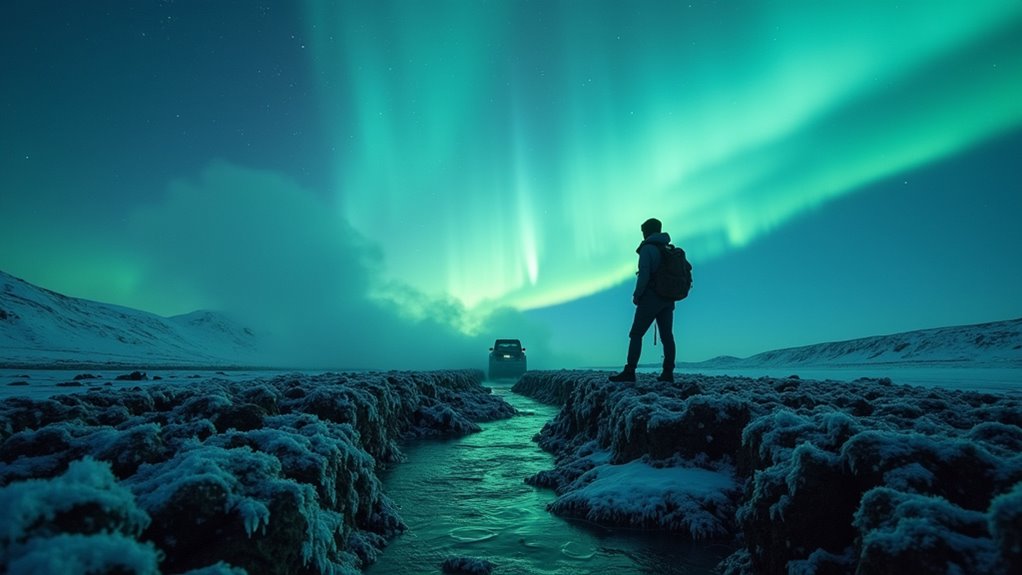
Never imagined Iceland's winter could offer fewer crowds and magical ice caves until this 7-day itinerary revealed the secrets.
A winter week in Iceland offers unique advantages with 50-70% fewer travelers. Start in Reykjavík, then explore the snow-draped Golden Circle and South Coast’s frozen waterfalls. Don’t miss guided ice cave tours in Vatnajökull and Northern Lights viewing between 9PM-2AM. Visit the Snæfellsnes Peninsula for volcanic landscapes and spend a day at thermal spas like Sky Lagoon. Pack layers, waterproof gear, and crampons—this frosty wonderland transforms completely when temperatures drop.
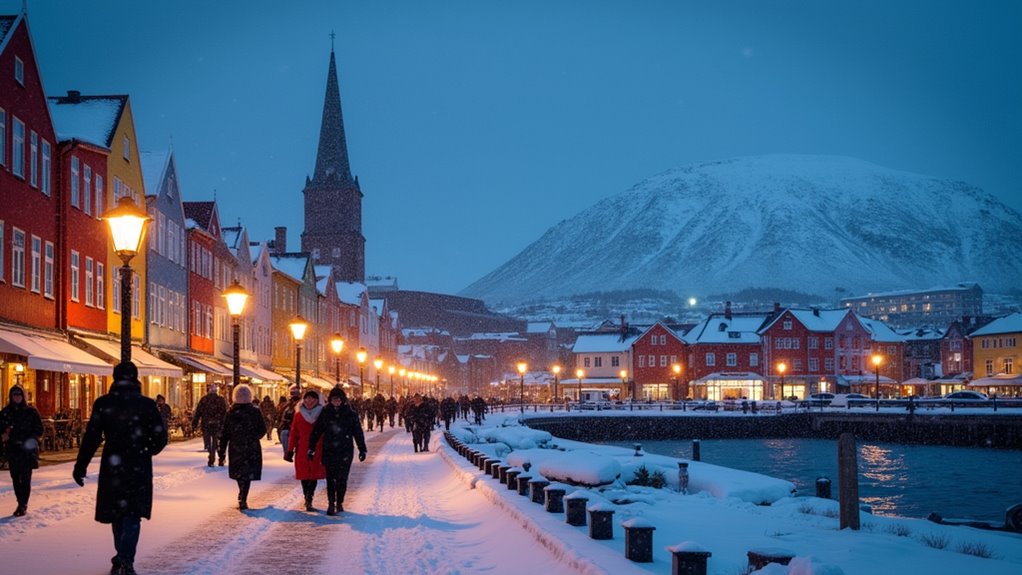
As you step off the plane into the crisp Icelandic air, Reykjavík’s winter charm immediately unfolds before you. The capital embraces January’s mild temperatures, ranging from -3°C to 3°C, thanks to the Gulf Stream’s warming influence.
With just 4-6 hours of daylight, you’ll need to plan carefully. Pack layers and waterproof clothing, plus sturdy footwear for traversing icy sidewalks. Monitor weather forecasts religiously—conditions can change rapidly. Expect to encounter strong winds, as January typically experiences peak wind speeds of around 25.6 km/h.
Don’t let shorter days limit your experience. The darkness creates perfect conditions for Northern Lights viewing, while the city’s thermal pools offer warm respite. Unlike the snorkeling spots in Dubrovnik, Iceland’s winter waters require specialized equipment and guided tours.
Rely on Reykjavík’s efficient public transportation when snow makes walking challenging.
For indoor activities, explore the city’s museums, savor traditional cuisine in cozy restaurants, or browse local boutiques for unique Icelandic treasures.
While summer draws the crowds, Iceland’s Golden Circle reveals its true magic during the off-season months. This 300km loop from Reykjavík transforms into a winter wonderland, with Thingvellir’s dramatic fissures dusted in snow, Gullfoss waterfall partially frozen in sculptural ice, and Strokkur geyser erupting through the frosty air every 5-10 minutes. The limited daylight hours in winter require careful planning to fully experience all the attractions along this popular route. Be prepared for higher price points compared to many European destinations, especially for food and accommodations during your Golden Circle adventure.
Don’t forget waterproof layers—you’ll need protection from both geothermal spray and unexpected snow squalls.
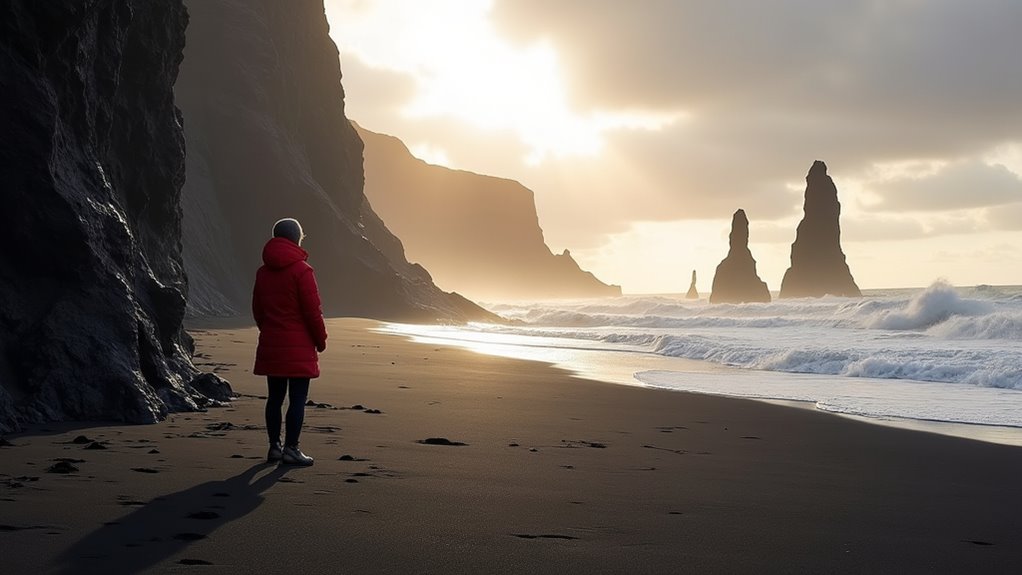
Iceland’s South Coast transforms into a photographer’s paradise during the off-season, when fewer travelers crowd its dramatic landscapes. The iconic 60-meter Seljalandsfoss and Skógafoss waterfalls showcase frozen cascades perfect for long exposures, though the walk-behind path at Seljalandsfoss closes in winter due to ice.
Don’t miss Kvernufoss, a hidden gem requiring just a 20-minute flat hike from Skogar Museum. This quieter waterfall offers a tranquil experience while still enjoying South Iceland’s natural beauty.
At Reynisfjara black sand beach, admire the 66-meter Reynisdrangar sea stacks and hexagonal basalt columns, but stay at least 30 meters from the dangerous sneaker waves. Winter visitors can experience the ultimate solitude as many tour buses avoid these locations during the off-season.
With only 4-6 hours of daylight between December and January, plan your visits between 10 AM and 3 PM.
Pack microspikes for icy paths and check road.is hourly for changing conditions.
Three spectacular ice cave experiences await during Iceland’s off-season, each offering unique glimpses into the country’s frozen underworld. The Crystal Ice Cave in Vatnajökull (November-March) showcases vivid blue ice formations, while Katla’s caves near Vík display dramatic black volcanic ash layers. For something exclusive, helicopter tours access remote caves without crowds. These natural wonders form as meltwater carves caverns beneath glaciers during warmer months that later refreeze into stunning formations. After a morning of exploration, warm up with traditional Icelandic cuisine featuring local delicacies that provide much-needed energy during winter adventures.
Prime visiting months are November through March when cave conditions are most stable, but advance reservations are essential due to limited capacity.
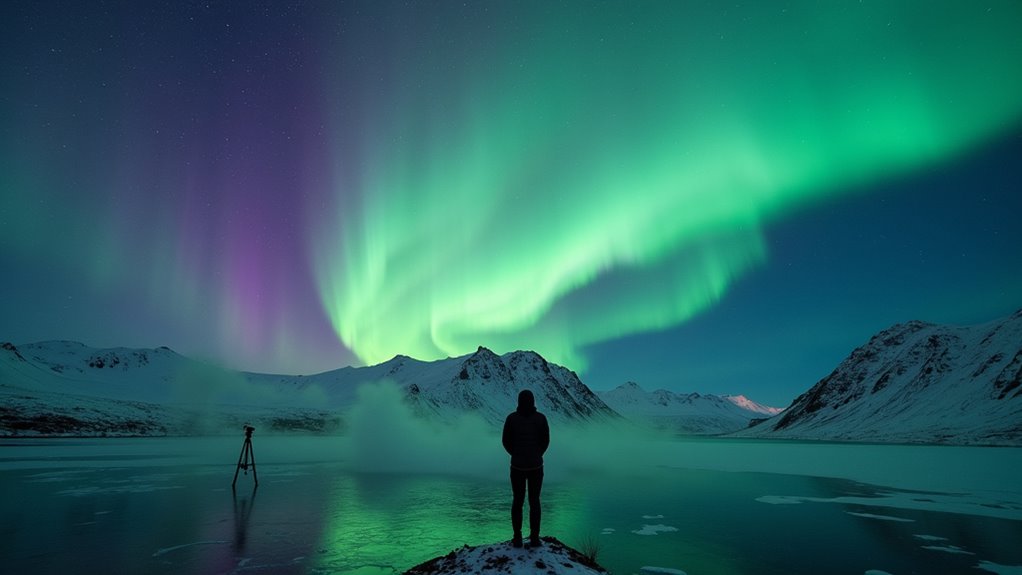
Chasing the Northern Lights tops the bucket list for most Iceland visitors, and the off-season offers your best chance to witness this spectacular phenomenon. Plan your aurora hunts between September and March, focusing on the 9 PM to 2 AM window when activity peaks.
For prime viewing, head to Jökulsárlón Glacier Lagoon where icebergs mirror the dancing lights, or to Vík’s black sand beaches for dramatic foregrounds. If you’re staying near Reykjavík, Seltjarnarnes Peninsula provides a convenient escape from city lights. The year 2025 will be particularly promising for aurora sightings as it coincides with the solar maximum in the sun’s 11-year activity cycle.
Bring a DSLR camera with a wide-angle lens, tripod, and remote shutter. Set your camera to manual mode with ISO 1600-3200 and a 15-30 second exposure.
Check aurora forecasts via apps and the Icelandic Met Office before venturing out. Unlike the often-crowded attractions in European cities, Iceland’s viewing spots offer serene environments to enjoy the Northern Lights without dealing with tourist traps that might diminish your experience.
After searching for the Northern Lights, a journey to the Snæfellsnes Peninsula offers another off-season highlight in Iceland. Often called “Iceland in miniature,” this 90km stretch packs volcanic wonders, coastal scenery, and cultural landmarks into a day trip that’s even more magical in winter.
You’ll find the iconic Kirkjufell mountain and its nearby waterfalls partially frozen, creating a photographer’s dream. The black church at Búðakirkja stands in stark contrast against the snow-covered landscape. While not as opulent as luxury European destinations, the raw, untouched beauty of winter Iceland offers a different kind of indulgence. With 4-6 hours of daylight in winter, plan your stops carefully. The peninsula is dominated by the magnificent Snæfellsjökull glacier, which is famous in literature as the starting point for Jules Verne’s “Journey to the Center of the Earth.”
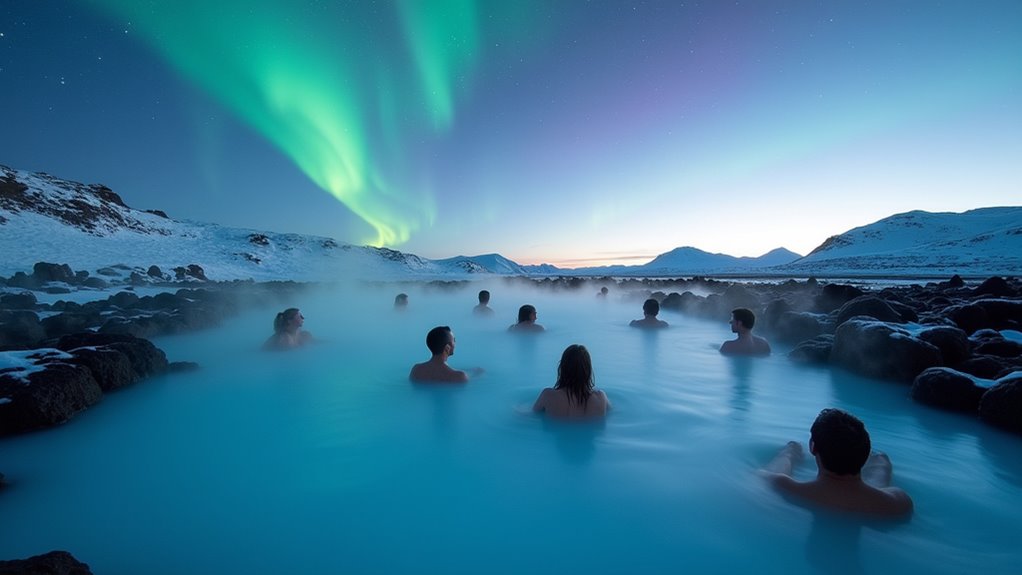
As your Iceland adventure winds down, dedicating a day to thermal relaxation offers the perfect counterbalance to winter exploration. The Blue Lagoon provides indoor access from steamy pools, with amenities like showers and saunas that make winter visits comfortable.
For a less crowded alternative, try Fontana Geothermal Spa with its varied temperature pools overlooking Lake Laugarvatn. Consider visiting Sky Lagoon, which opened in 2021 and offers stylish private cabins and stunning oceanfront views. Similar to finding the perfect luxury accommodation in Paxos, choosing the right thermal spa can elevate your Icelandic experience.
Don’t forget to pack a bathrobe—it’s a common sight at these thermal havens. In your final days, sample traditional Icelandic dishes like fish stew and lamb, or explore Reykjavik’s shopping districts for unique souvenirs.
If weather permits, cap off your journey with a Northern Lights viewing, a truly magical way to conclude your off-season Iceland experience.
Your 7-day winter journey through Iceland offers a perfect blend of natural wonders and cozy experiences without the summer crowds. You’ll see the country’s raw beauty in a completely different light, just like Maria from Boston who caught the Northern Lights three nights in a row near Vik. Pack those thermal layers, embrace the limited daylight, and you’re set for an unforgettable off-season adventure in the land of fire and ice.